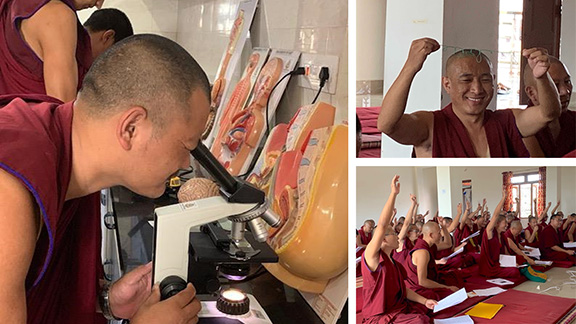“The Dalai Lama feels that for Buddhism to grow that their understanding of the world must include all truths … He saw the need for his most serious students to learn western science, which he considers a truth, so that their religion remains relevant.”
These are the words of Dr Philip Morgan who, along with his wife and fellow scientist Dr Margaret Sedensky, travels to India as part of the Emory-Tibet Science Initiative founded by Emory University to bring faculty from western universities to teach science to Tibetan monks.
According to an article in On The Pulse, the e-news outlet of Seattle Children’s, in addition to cell biology, the monks receive crash courses in physics, neuroscience and philosophy in classes held at a monastic university in southern India. Drs Morgan and Sedensky are researchers in the Center for Integrative Brain Research at Seattle Children’s Research Institute and have been travelling to India teaching science courses since 2017.
For two weeks in June, the scientists taught lessons on the basics of genes and cells to 50-100 monks in daily classes from 7.30 am until 4 pm with the occasional break for chai tea. They used a textbook with chapters in English and Tibetan, and were assisted by a translator. They also conducted hand-on experiments including one using wire to model the folding of proteins.
“It has been incredibly rewarding to interact with the monks … They approach learning very differently than we do in western science. For them, it’s not important to know exactly what DNA and RNA do, but to appreciate the beauty of how things are put together,” said Dr Morgan.
“I find their ability to focus on the big picture so refreshing,” said Dr Sedensky, “They asked big questions like, ‘Where did the first cell come from?’ that made us think beyond the information you would find in a textbook. Sometimes we were stumped, but I enjoyed searching for the answers.”

